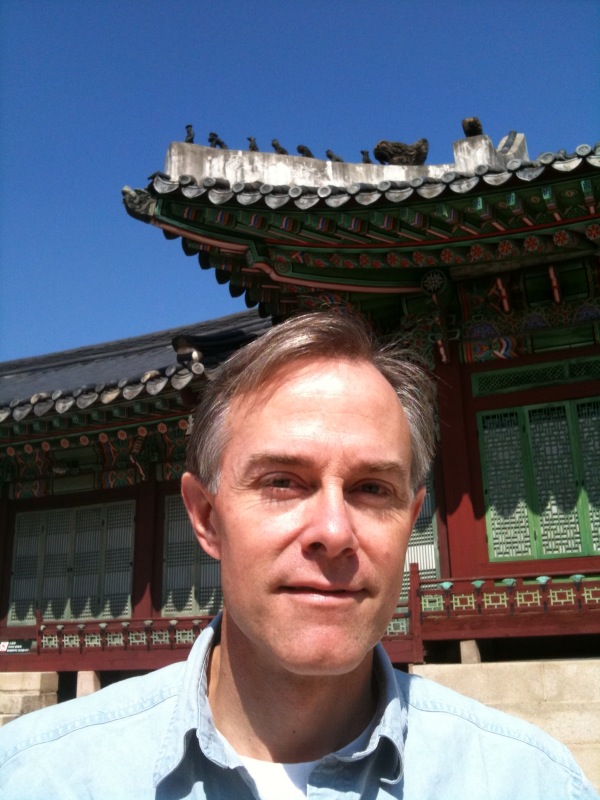UNESCO Second World Conference on Arts Education in Seoul
Blog 4
Theodore Wiprud
June 22, 2010
I wasn’t sure why the composer Hi Kyung Kim was keynoter for the second day of the UNESCO 2nd World Conference on Arts Education – a day devoted to “Advocacy: Outreach to socio-cultural values.” She talked about artistic dialogue between cultures, but what did she have to say about education, advocacy, outreach? On reflection: plenty. It was almost a parable of effective arts education.
Ms. Kim outlined a series of compositional projects and partnerships that over the last ten years have delved deeper and deeper into cross-cultural musical issues. Having grown up in Korea, moved to California at 25, completed her studies as a composer at UC Berkeley – is she a Korean composer or an American composer? She became interested in traditional Korean music only when confronted by that question. Can traditional Korean music and Western classical music coexist in one work? Can their very different instruments work together? Can they emulate each other? Should they? Or can they find common ground in some new acoustic space?
Each of her projects has taken a different tack, and each seemed to achieve a new kind of synthesis. Each project involved collaboration with traditional musicians and ultimately with a number of Western composers. In fact a California school of composition around traditional Korean instruments seems to be emerging, a phenomenal outcome of one person’s quest really to understand her own mixed artistic heritage.
So what about education? First, what a great example of inquiry. It’s all about the questions, framed so well that fascinating new art is the only answer – and each answer leads to more questions. Talk about constructivist learning. Talk about research through the artistic process (see my prior posting)!
Second, to borrow Ms. Kim’s quote from fellow composer Chou Wen-Chung: “We must educate the young about our past in order to create an art for the future.” The new works fusing Korean and Western music are based on intensive study of both. You actually have to know something in order to ask good questions. Learning about traditional Korean music, or about the gayageum say, becomes urgent when it’s motivated by artistic inspiration. It’s project-based learning of the highest order.
Finally, maybe most important to me as a composer, it’s about beauty, beauty as the reward for learning, beauty as the evidence of learning. It’s the creative drive in all of us taking the lead in directing our own learning. It’s what the eight Very Young Composers of Seoul did in the week prior to the conference – they came together without prior training, to write music for chamber orchestra. Their Teaching Artists trusted them to take the lead, knowing from ample experience that every child has fresh ideas and that with encouragement those ideas will bring new beauty into the world.
Whoever invited Hi Kyung Kim to keynote was very wise. Her presentation concluded with a performance of a piece of hers for solo daegum, a traditional Korean transverse flute with fascinating timbres that she exploited expertly. I expected only a few music people to stay. No, everyone stayed – the beauty and humanity of her music validated all she had described. Although she spoke more about conditions for artistic work and performance than about educational theory, her message was ultimately about how we learn and how we create. The talk itself was great advocacy, great outreach to the assembled delegates, on behalf of inquiry, learning, trust, beauty.
To sum up the UNESCO 2nd World Conference on Arts Education, I don’t know whether documents like the Road Map from Lisbon or the new Seoul Agenda, distributed to UNESCO member states, will actually influence policy anywhere. The conference itself certainly afforded some gems amidst the read-aloud papers from academics and government officials. Ultimately, for me, discovering what a live issue arts education is in countries large and small, nations developed and developing, gave me a much wider context for understanding what we do here in New York, and what we can contribute to the worldwide effort. In the wider context, the United States enjoys tremendous riches in arts education. Whatever the week’s bad news, we have so much, and so much to work with. Now we even have the benefit of experiencing ideas taking hold elsewhere. As I often say: it’s an exciting time.
***************************************************************************************************************
Theodore Wiprud
Director of Education, New York Philharmonic
Theodore Wiprud has directed the Education Department of the New York Philharmonic since October 2004. The Philharmonic’s education programs include the historic Young People’s Concerts, the new Very Young People’s Concerts, one of the largest in-school program of any US orchestra, adult education programs, and many special projects.
Mr. Wiprud has also created innovative programs as director of education and community engagement at the Brooklyn Philharmonic and the American Composers Orchestra; served as associate director of The Commission Project, and assisted the Orchestra of St. Luke’s on its education programs. He has worked as a teaching artist and resident composer in a number of New York City schools. From 1990 to 1997, Mr. Wiprud directed national grantmaking programs at Meet The Composer. During the 1980’s, he taught and directed the music department at Walnut Hill School, a pre-professional arts boarding school near Boston.
Mr. Wiprud is also known as a composer and an innovative concert producer, until recently programming a variety of chamber series for the Brooklyn Philharmonic. His own music for orchestra, chamber ensembles, and voice is published by Allemar Music.
Mr. Wiprud earned his A.B. in Biochemistry at Harvard, and his M.Mus. in Theory and Composition at Boston University, and studied at Cambridge University as a Visiting Scholar.

 blog | AJBlog Central | Contact me | Advertise | Follow me:
blog | AJBlog Central | Contact me | Advertise | Follow me: 

